The Descent of Man
 Bashny.Net
Bashny.Net
In honor of the 100th anniversary of the National Mall in Washington Natural History Museum presents a new exhibition of David H. Coke, which is dedicated to the origin of man. At the southern entrance is a "time bar", which represented human ancestors
12 ph via Bigpicture

2. The exhibition area of 1393 sq.m. exhibited more than 285 human fossils and artifacts. Also on display are the reconstruction of entities, such as that Homo floresiensis created by artist John Gurhe (in the background).
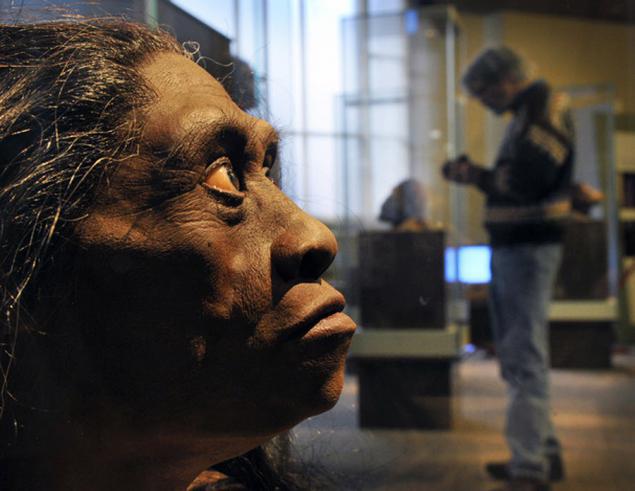
3. The program of the exhibition, which costs 20, $ 7 million, the stands, covering the period of 6 million years of human evolution. This photo shows one of the many bronze sculptures Neanderthal life-size

4. Another bronze image of Neanderthal man with the characteristic features of this type: a large brow arch, low forehead and protruding middle part of the face.
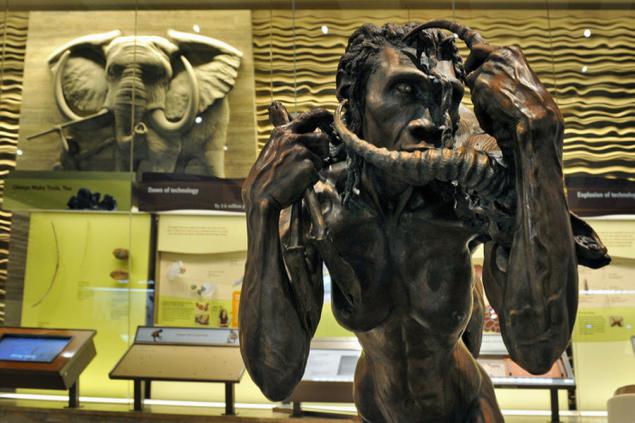
5. The exhibition can be viewed on the reproduction of "Lucy" - the most complete skeleton of Australopithecus found today. The age of these remains, found in Ethiopia in 1974, is about 3, 2 million years. They have enabled modern scholars know the size and physical characteristics of early man.
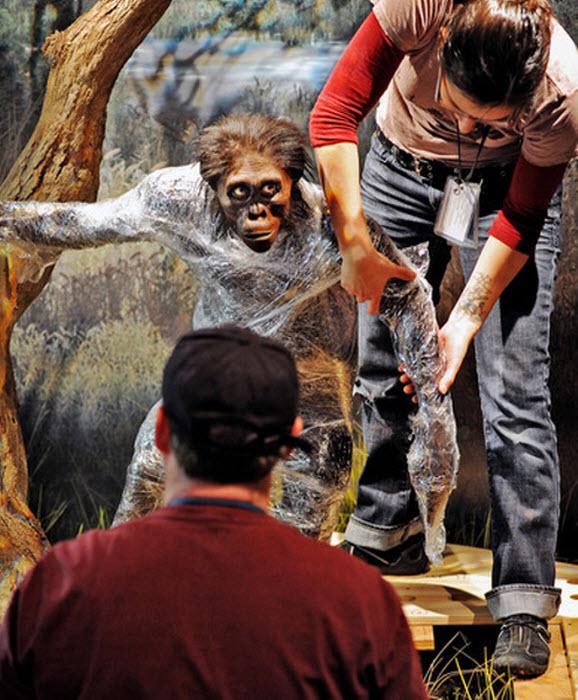
6. Handprints on the wall of the cave - an example of the art of early man.

7. These skeletons of Neanderthals show changes in the structure of the skeleton and the growth that took place with our ancestors for thousands of years.
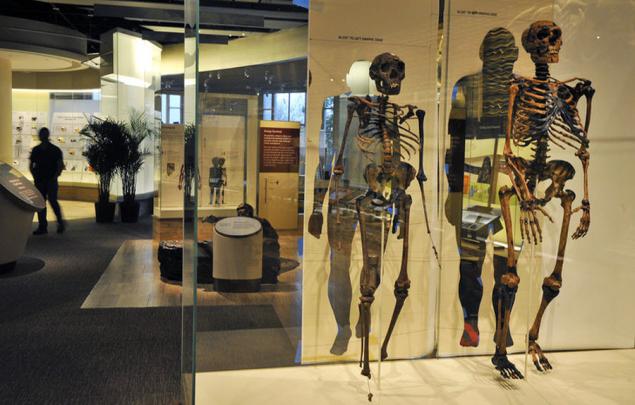
8. These two Neanderthal skeletons visible similarities and differences between the early members of the human species and modern humans. For example, the Neanderthals, who lived in the territory of a cooler climate in Europe the band were shorter with a wider and squat figure than that of modern man. Scientists believe that these features help to keep their bodies warm.
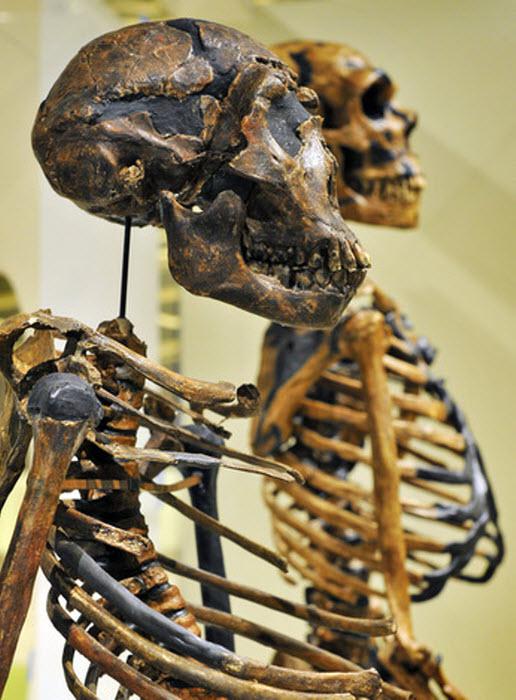
9. Stand with relatively recent human skull allows you to make a comparison between modern and ancient man.

10. The exhibition features more than 75 skulls, including two lent from the collection in the Museum of Man in Paris: only a Neanderthal skeleton in the United States and the original Cro-Magnon skull found in 1868 in the French cave of Cro-Magnon. This photo collection of skulls shown, culminating in the skull of Homo sapiens.

11. The exhibition has several interactive elements. For example, for a laugh, you can use the special "station transformation" - you make a picture of his face, and then a special digital program changes it, so that you understand what you were in the form of primitive man.
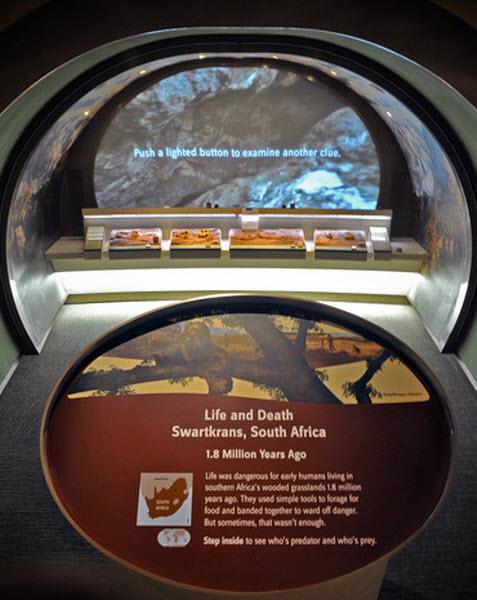
12
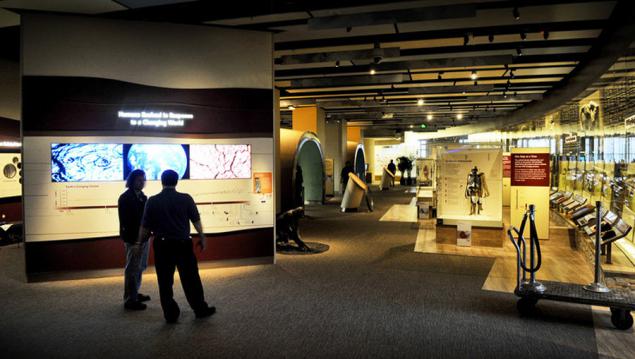
Source:
12 ph via Bigpicture

2. The exhibition area of 1393 sq.m. exhibited more than 285 human fossils and artifacts. Also on display are the reconstruction of entities, such as that Homo floresiensis created by artist John Gurhe (in the background).

3. The program of the exhibition, which costs 20, $ 7 million, the stands, covering the period of 6 million years of human evolution. This photo shows one of the many bronze sculptures Neanderthal life-size

4. Another bronze image of Neanderthal man with the characteristic features of this type: a large brow arch, low forehead and protruding middle part of the face.

5. The exhibition can be viewed on the reproduction of "Lucy" - the most complete skeleton of Australopithecus found today. The age of these remains, found in Ethiopia in 1974, is about 3, 2 million years. They have enabled modern scholars know the size and physical characteristics of early man.

6. Handprints on the wall of the cave - an example of the art of early man.

7. These skeletons of Neanderthals show changes in the structure of the skeleton and the growth that took place with our ancestors for thousands of years.

8. These two Neanderthal skeletons visible similarities and differences between the early members of the human species and modern humans. For example, the Neanderthals, who lived in the territory of a cooler climate in Europe the band were shorter with a wider and squat figure than that of modern man. Scientists believe that these features help to keep their bodies warm.

9. Stand with relatively recent human skull allows you to make a comparison between modern and ancient man.

10. The exhibition features more than 75 skulls, including two lent from the collection in the Museum of Man in Paris: only a Neanderthal skeleton in the United States and the original Cro-Magnon skull found in 1868 in the French cave of Cro-Magnon. This photo collection of skulls shown, culminating in the skull of Homo sapiens.

11. The exhibition has several interactive elements. For example, for a laugh, you can use the special "station transformation" - you make a picture of his face, and then a special digital program changes it, so that you understand what you were in the form of primitive man.

12

Source:
Tags
See also
The people believe that the
The most important dishes of various cuisines of the world (23 photos)
It created a Zippo lighter
In a world where there is no winds of peace ...
Deadlock honor.
God roaring metal
Codes of honor to men at various times
Travel USA
Monsters, in which I want to believe
The traditional dishes from different cuisines of the world (23 photos)

















